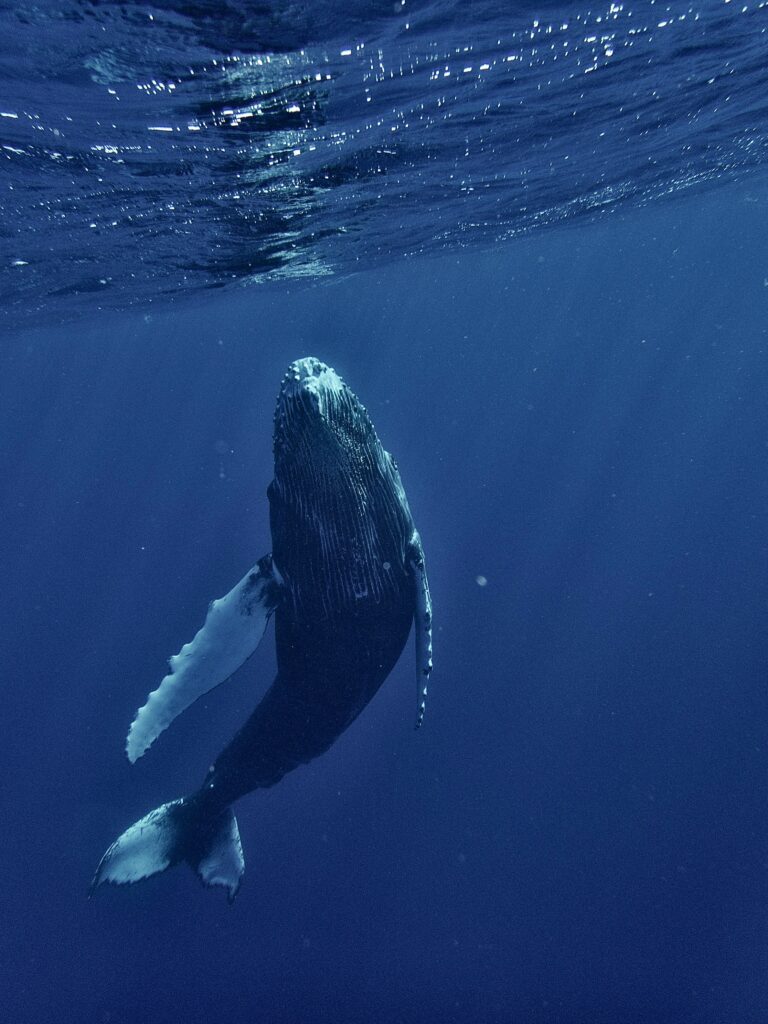Bottom trawling turns the vast seafloor into a graveyard, plastic pollutes shores, coral reefs bleach and die in silence. But who is held accountable for the death of our high seas—rich ecosystems that reside outside of national jurisdiction?
Lea D’Auriol has spent the a decade refusing to look away. As founder of Oceanic Global, she’s rallied artists, scientists, DJ’s, UN delegates, local leaders, and island elders to build an emotional, cultural, and political movement to reconnect humanity with the ocean. With over 95% of the biosphere underwater, and more than half of our oxygen born from its depths, the ocean is not a separate world. It is the world. And still, less than 3% are designated as fully protected. After the 2025 UN Ocean Conference, Icarus Complex writer Linda Förster sat down with D’Auriol to talk about what meaningful ocean protection really looks like, not just on paper, but in practice. What makes a marine protected area actually work? Can art help people feel what data can’t explain? And how do we move beyond extractive systems toward long-term, interdependent stewardship?
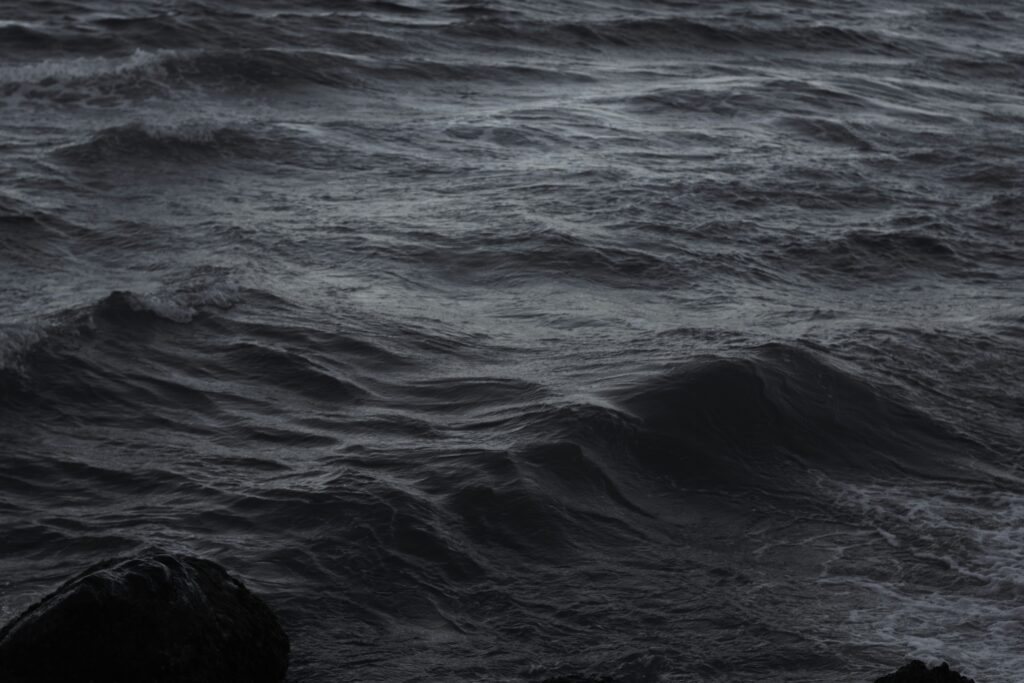
Linda Förster: Less than 3% of the ocean is fully protected. What constitutes meaningful and effective protection? Is it about legal designation, enforcement capacity, ecological outcomes, or something else?
Lea D’Auriol: Just before the 2025 UN Ocean Conference, Pristine Seas released a report which showed that only 2.8% of marine areas are fully protected – even less than we had previously assumed. If you include areas that are protected on paper, or designated as Marine Protected Areas (MPAs), we’re between 8–10%. But again, only 2.8% of that is what you’d call highly protected. By “highly protected,” I mean no-take zones. A clear example is banning bottom trawling in so-called protected areas, which is unbelievably still happening. David Attenborough’s latest documentary, Ocean, has a really powerful clip showing what bottom trawling actually looks like, and it’s sparked the start of a lot of campaigns. So a big focus of the 30×30 work during the conference was making sure we’re not just creating “paper parks” and MPAs in name only, with no legal enforcement. And we did see some progress. For example, in the UK, they pledged to ban bottom trawling in 41 MPAs (30,000 KM2) . Now the next step is figuring out how to actually implement that protection and make sure it is enforced. In France, there were plans for major commitments too, but they really fell short. So when we talk about MPAs and full protection, it comes down to a few things: strong legal designation, working closely with stakeholders, especially fishing communities, to formalize rules, and then actually enforcing them. From the scientific evidence we have, fully protected reserves are the only ones that show strong outcomes in biodiversity, food security, and climate resilience. There was a lot of momentum at the conference. For example, French Polynesia just announced the largest MPA in the world: over five million square kilometers. About 20% of that, so 1.1 million km², is going to be a fully protected no-take zone. That’s massive progress, even though it needs to go further. We also saw Chile commit to protecting over 50% of its waters, and countries like Colombia and Tanzania making big moves. But to put it in perspective, Enric Sala shared that to hit the 30×30 goal, we’d need to designate 85 MPAs every day until 2030. That’s the scale we’re talking about. And they can’t just be paper parks.
LF: You mentioned momentum. Why do you think there’s so much of it now? Is it Attenborough’s documentary? The result of recent conferences? Or a broader shift?
LD: It takes years. One of the biggest things that the third UN Ocean Conference advanced on was the BBNJ Treaty: the High Seas Treaty. Two-thirds of the Earth’s surface is ocean, and the high seas are the parts beyond national jurisdiction, beyond 200 nautical miles from shore. Until now, there’s been no legal framework to govern that space. The BBNJ Treaty changes that. We need 60 countries to ratify it, and by the end of the conference, 50 had signed on. That means we’re likely to have it ratified by the end of the year. That unlocks a framework for marine protected areas in the high seas, for creating migration corridors, and so on. So 30×30 is actually part of that broader vehicle. This momentum also stems from the biodiversity framework agreed on in Montreal a few years ago. So what we’re seeing now is a continuation and acceleration of all that work.
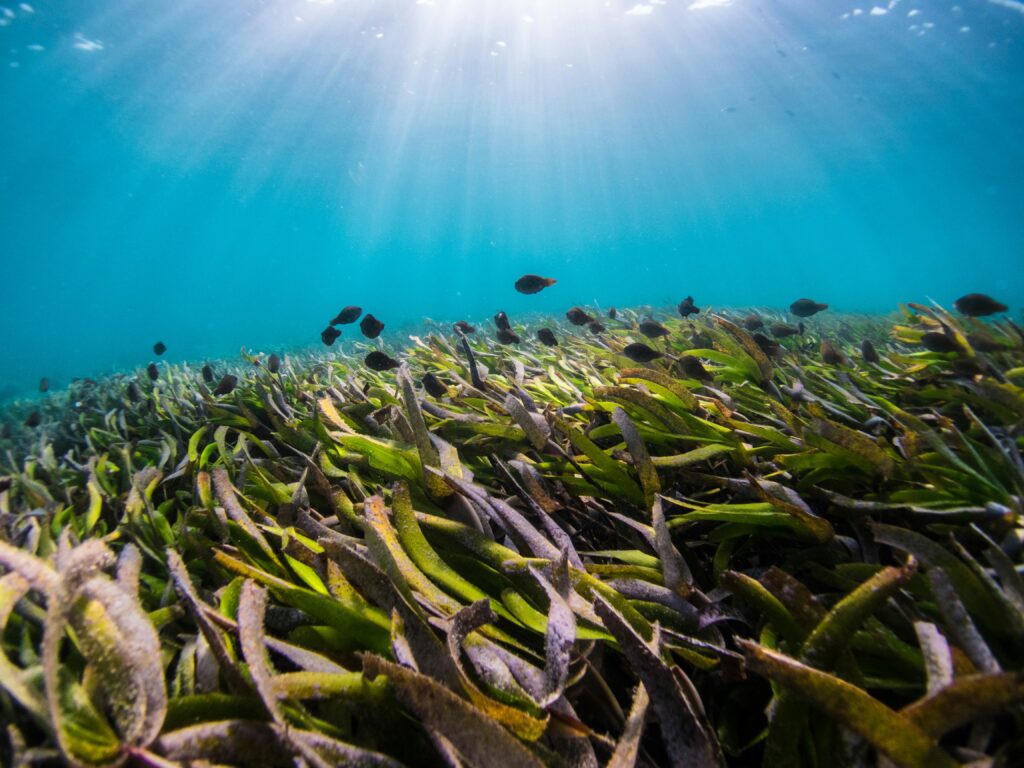
LF: How does ocean protection differ from land conservation, and what are the unique political, legal, and logistical barriers that differentiate the two?
LD: It’s very different, mostly because of how jurisdiction works. On land, ownership is straightforward: governments manage what’s within their borders. But with the ocean, you have the high seas that belong to no one. Until now, there’s been no legal governance structure. That’s why international collaboration is so critical. Convenings like the UN Ocean Conference are key, because without collective stewardship, the high seas remain a free-for-all. Another barrier is visibility. People don’t connect with the ocean the way they do with land. You can see a forest being cut down. But it’s much harder to visualize what bottom trawling or coral bleaching looks like. That disconnect means the ocean get very little attention. Less than 1% of global philanthropy goes to ocean conservation. Yet the ocean sustains all life. It’s a paradox rooted in a lack of awareness and emotional connection.
People don’t connect with the ocean the way they do with land. You can see a forest being cut down. But it’s much harder to visualize what bottom trawling or coral bleaching looks like. That disconnect means the ocean gets very little attention. Less than 1% of global philanthropy goes to ocean conservation. Yet the ocean sustains all life. It’s a paradox rooted in a lack of awareness and emotional connection.
LF: Can you walk us through how a marine protected area comes into being? What role does connectivity (like biological corridors or migratory pathways) play in scaling ocean protection?
LD: Traditionally and too often, MPAs exist in isolation. But ocean ecosystems don’t work that way. Marine species don’t understand borders. Currents and migratory routes connect ecosystems across the globe. Take a leatherback sea turtle: one that hatches in Costa Rica might swim to the Galápagos and beyond, crossing 30 different national jurisdictions, including the high seas. Or sharks, which are protected in one zone, caught in another. That’s why collaboration and shared governance is so important. Countries like Costa Rica and Ecuador are partnering now to create protected “swimways” between the Cocos Islands and the Galápagos. That protects species like hammerhead sharks and leatherback turtles. And climate change is shifting migration routes and temperature zones, so we’ll need to adapt MPA networks and migration corridors to keep pace with those changes. It’s a dynamic system.
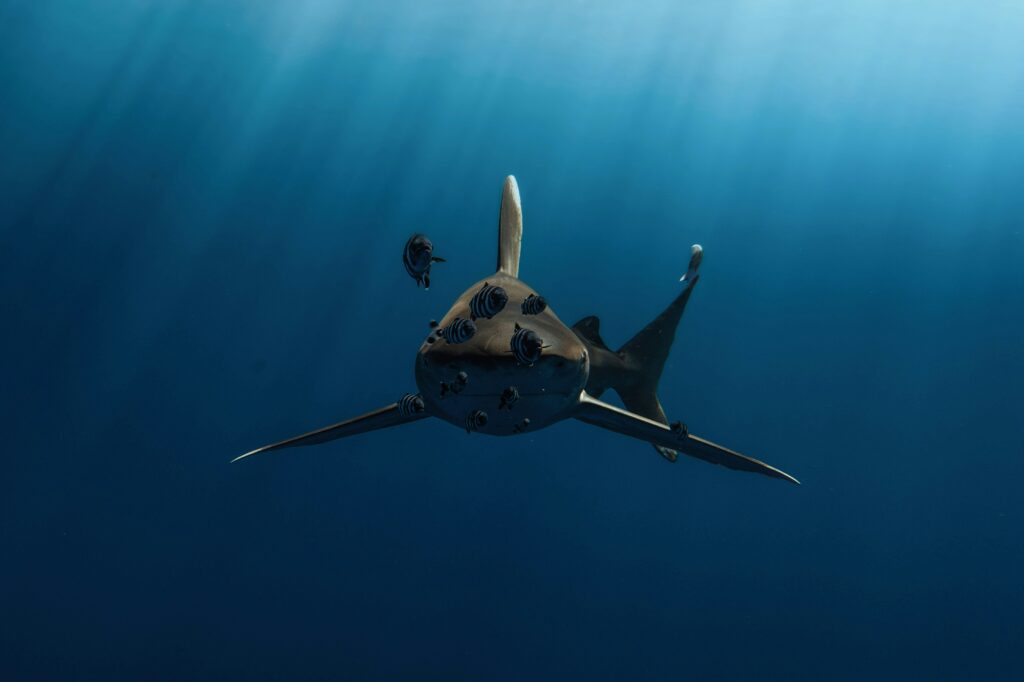
LF: Do you think the public understands the ocean’s role in climate stability? And if not, what do you wish people knew, both intellectually, and emotionally?
LD: Unfortunately, no. I don’t think most people fully understand how vital the ocean is; not just for climate, but for sustaining life. The ocean covers 70% of Earth’s surface and 95% of the biosphere. It produces over 50% of the oxygen we breathe. Even if you live far from the ocean, you rely on it to survive. And when it comes to climate, the ocean has been our greatest ally. It’s absorbed over 90% of the heat from global warming since the 1970s. But we’re now seeing the limits – ocean acidification just passed one of the key planetary boundaries. Most people also don’t understand how ocean currents work; how they regulate global temperatures. Healthy oceans store carbon in mangroves, seagrass meadows, and the deep sea. As those systems are degraded, we’re going to experience more extreme weather, shifting fisheries, and coastal flooding. I think what we need most is impactful storytelling. Documentaries like Attenborough’s are key. That bottom trawling clip was viewed 66 million times. What worked so well in that documentary was leading with beauty and awe, then slowly introducing the hard truths of what’s going on right now. That’s what allows us to connect the emotional with the intellectual. A lot of our work taps into the arts for that very reason. We try to create embodied, immersive experiences so people feel part of nature again, not separate from it.
What worked so well in [Ocean] was leading with beauty and awe, then slowly introducing the hard truths of what’s going on right now. That’s what allows us to connect the emotional with the intellectual. A lot of our work taps into the arts for that very reason. We try to create embodied, immersive experiences so people feel part of nature again, not separate from it.
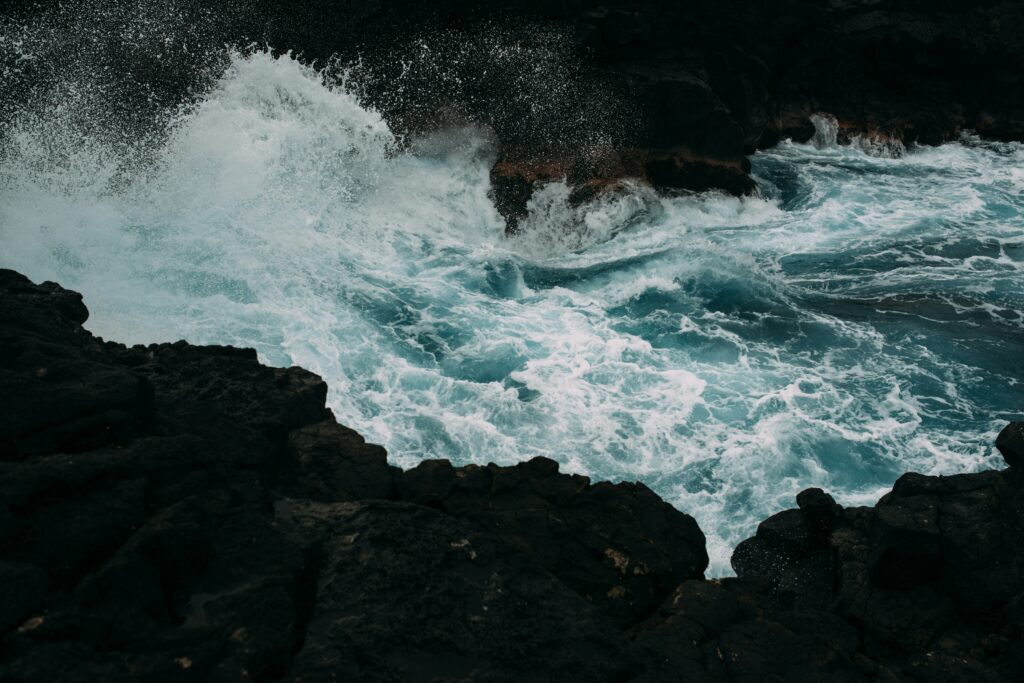
LF: In your work with artists and creators, what’s a project or collaboration that truly changed the way people saw the ocean?
LD: Funny enough, when I started Oceanic, I didn’t even know I was starting a foundation. I just had this idea to do a one-day event in Ibiza, called Oceanic x Ibiza, to reconnect people to the ocean and raise awareness about plastic pollution and Posidonia oceanica, a seagrass that’s the oldest living organism on the planet. Between Ibiza and Formentera there is one of the largest and oldest Posidonia meadows in the world, a UNESCO World Heritage Site. But people were anchoring boats on it and tearing it up this slow growing seagrass. We hosted the event in 2017. It was framed as a music festival, but we worked with scientists, conservationists, artists, schools and the media in the lead-up. The coverage wasn’t about the festival, it was all about the issues: plastic, seagrass, overfishing, coral reef bleaching, environmental action and more. We had 40 nonprofits on-site: from Sea Shepherd to local groups, offering ways to take action. One of our partners, Manu San Félix, used the funds raised to implement a €10,000 fine for anchoring on the seagrass during summer months. We also worked on local single-use plastic bans. So we saw real policy impact come out of that. This ethos continues to be key on how we design our experiences and programs, from partnerships like Arcadia Earth to producing global events like the Ocean x Climate Summit during COP27 to global campaigns, like this year’s theme Wonder: Sustaining What Sustains Us for UN World Oceans Day.
LF: Your grants support everything from plastics removal to mangrove restoration through local, indigenous-led efforts. How do you ensure these projects sustain lasting ecological, and economic, resilience?
LD: Super simple: you need to have local partners on the ground to build these projects with locally-led stewardship in mind. From identifying the needs, design with local cross-sector partners and implementation and reporting. That’s really, really important. There has to be community capacity to continue the work. All of our grants are structured to enable those local stewardship efforts, so they can take ownership.
LF: What kind of stakeholders do you involve, and what does that process look like?
It really depends. In West Africa, for example, we worked with an amazing Indigenous elder and the founder of Grabe Benin. The reason we did that grant was because mangroves were legally protected in Benin, but there was very little actual implementation. We saw a big need for youth education, community engagement and capacity building, to help people understand why mangroves matter and shift the relationship with them. The funding provided tools and resources as well as hand on experiences planting mangroves, over a two-year period to help them transition toward stewardship. The government support was already there, but we saw a real need at the local level to make stewardship possible. So that felt like a very natural space for us to step in. With our plastics grants work, particularly around river barriers and interception, we work with local NGOs and partners. From the beginning, we structure things around long-term vision – beyond our involvement – so we can remove interdependence over time.
From the beginning, we structure things around long-term vision – beyond our involvement – so we can remove interdependence over time.
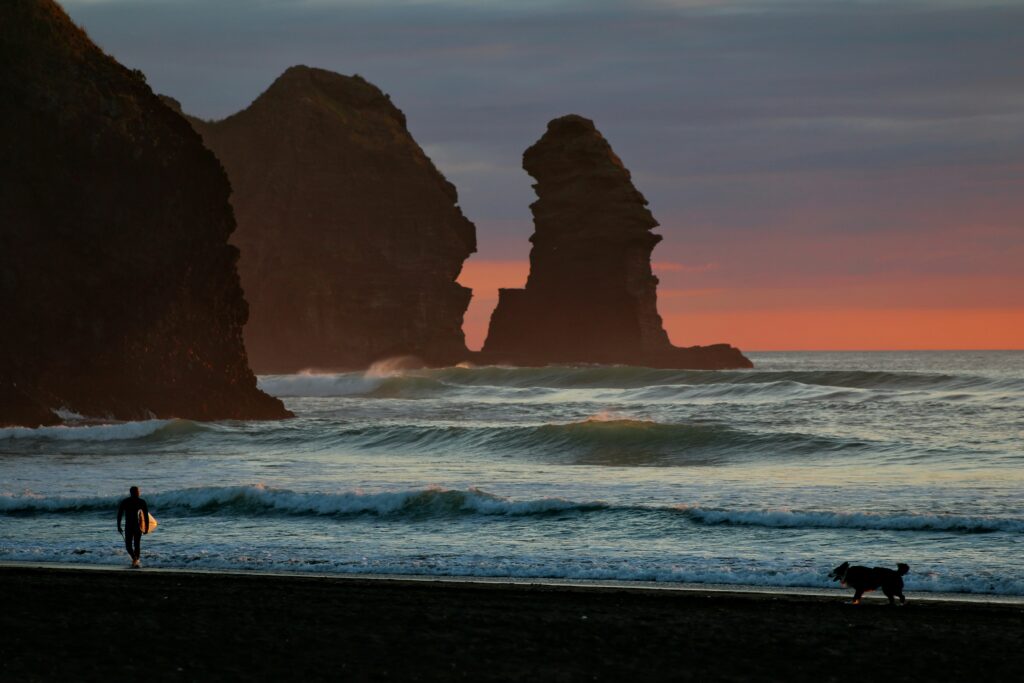
It’s so simple: the issues we face internally are reflected externally. If the ocean is being choked by plastic, so are we. There is no separation. Nature doesn’t understand division.
LF: How do you see the Global Plastics Treaty influencing real change, and what role does Oceanic Global play in addressing the plastic crisis at both the environmental and human health levels?
LD: Yes. The Global Plastics Treaty is really that pathway. One of the positive outcomes from the recent negotiations in Nice was that over 19 countries agreed to put plastics back on their national agendas. There’s been a real resurgence, especially with commitments from Pacific Island and Southeast Asian nations to stop plastic leakage. The treaty has struggled the past couple of years, but hopefully there’s finally momentum to revisit and address it. What’s important is that it covers multiple parts of the problem; not just waste management, but also production. Because right now, we’re almost projected to triple plastic production and waste by 2060. That’s a massive issue. Over 40% of plastic produced is for packaging, and more than half of that is single-use. We also don’t have the global waste management infrastructure to handle it. So we’re creating a disaster from both a production and disposal standpoint. At Oceanic Global, we view plastic pollution not only as an environmental issue, but also as a human health one. Our Blue Standard program helps businesses eliminate plastics from their operations, thus turning off the tap on plastic. We also take a systems-level approach: through our multiyear partnership with Corona, for example, we’re funding river interception projects, now in their third year, because around 80% of ocean plastic enters via rivers. These waterways like the arteries of the planet. Everything flows through them, ultimately reaching the ocean. And no one’s really talking about the human health side of plastic either. What’s often missing from the public conversation is how plastic pollution impacts our health. Beyond the tragic effects on marine life––from ghost nets to entangled species––microplastics have now been found in human blood, lungs, even brains and umbilical cords. We’re breathing it, eating it, absorbing it. Science is only beginning to uncover the full extent of how these toxins accumulate in our bodies, disrupting hormones, brain function, and more. It’s so simple: the issues we face internally are reflected externally. If the ocean is being choked by plastic, so are we.
There is no separation. Nature doesn’t understand division.
